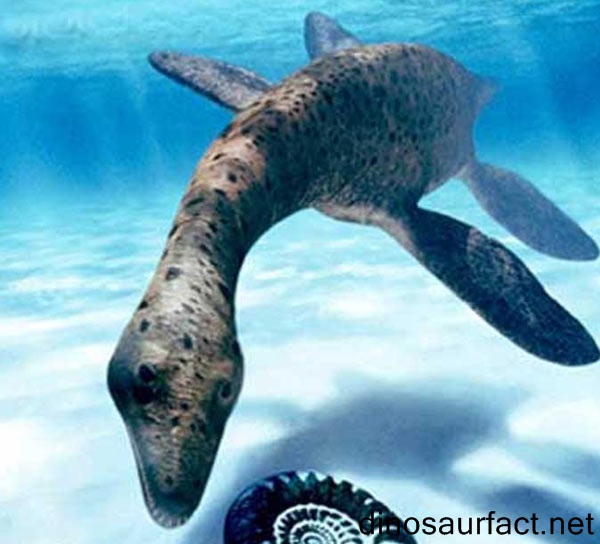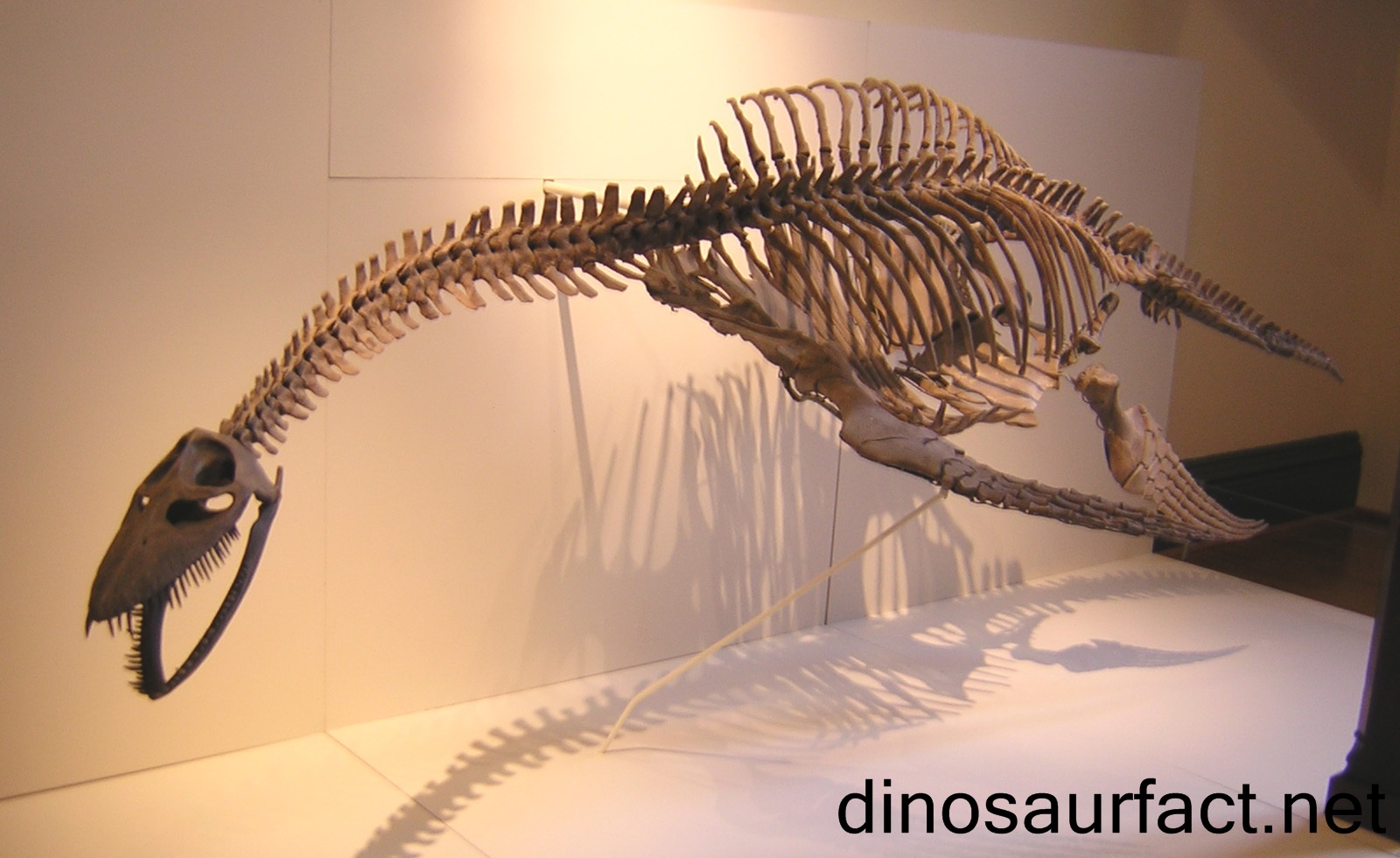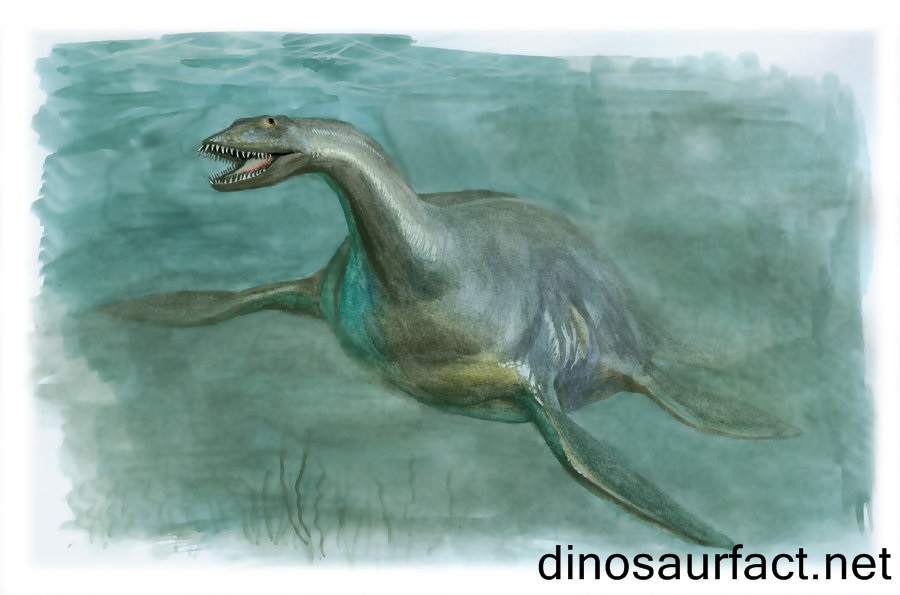 Click to visit the previous Marine Specie bio
Click to visit the previous Marine Specie bio
 |
|
 |
|
Kingdom: Animalia
Phylum: Chordata
Class: Sauropsida
SuperOrder: Sauropterygia
Order: Plesiosauria
SubOrder: Plesiosauroidea
Family: Cryptoclididae
Genus: Cryptoclidus
 |
|
 |
|
 |
|

Cryptoclidus pronounced as Krip-toe-klide-us was a plesiosaur. Plesiosaur was named to characterize the presence of their long neck. While the name Cryptoclidus signifies the presence of the hidden collar bone. Fossil remains of Cryptoclidus and other closely related plesiosaurus have been discovered all around the globe. It should be mentioned that the whole fossilized skeletons of Cryptoclidus have been found in abundance in the clay quarries present in the regions of Oxford and Peterborough in England. Fossil studies of Cryptoclidus indicate that these species have probably roamed in the water bodies as long as 165 million years ago in the Late Jurassic period.
The name Cryptoclidus was given by Harry Seeley. Mr. Seeley was a British paleontologist born in the year eighteen thirty nine. He passed away in the year nineteen hundred and nine. Harry Seeler grabbed the spotlight with his famous publication in the year eighteen hundred and eighty eight. Till the publication of this paper, scientists throughout the world have been discussing on various parameters for the classification of dinosaurs that should be followed worldwide. Previously scientists have been classifying various fossils on the basis of their teeth. Again there have been various schools of thought who have been classifying the dinosaurs on the basis of limbs. However none of the above schemes seemed to be having satisfying results. Seeley in this time of confusion proposed a genius idea on classifying dinosaurs on the basis of their hip structure. He proposed the classification to be on the basis of ‘ornithischia’. This refers to dinosaurs that had hips resembling birds. The other class included ‘saurischia’. This referred to dinosaurs having hips resembling that of lizards. This is seemed to be of great significance in the nomenclature of dinosaurs. It should be mentioned that this scheme of nomenclature have been persisting till date and this system has been globally accepted.
Scientists started finding ancient sea fossils even before they were finding dinosaur fossils. The shallow oceans in general did not cover the bones of these fossils. The water as a nature was continuously moving and it should also be mentioned that there was low level of erosion. These kept the fossils very much intact and preserved.
An amusing matter of fact is that Cryptoclidus has often been mistaken for Nessie or the more infamous Loch-Ness Monster. Nessie has been one of the most popular mysteries in the world. The origin however has been from Scotland. There have been rumors that there have been sightings of this monster in the large lakes of Loch Ness. However these have just been there for the amusement of a particular section of society.
Cryptoclidus belonged to the group of Plesiosaurus. They belonged to the clan of different reptiles who included marine reptiles and ichthyosaurs. They were believed to have descended from land living creatures who have by the way of evolution returned to the sea. However still now there has been divided opinion on the relation of Plesiosaurs with other marine group of animals. Still now there has been enough scientific evidence that Plesiosaurs were distantly related to other groups of dinosaurs. There have been different theories regarding the habitat of Cryptoclidus not being completely marine by nature. There have been different schools of thought who are of the opinion that Cryptoclidus spent a considerable part of their day in land. They must have visited the sea when they needed to feed. Again practically it is impossible to prove how Cryptoclidus divided their entire day between land and water. Anatomical details however prove that land movement was possible for these animals to avail movement on the land however they must have been a much graceful creature within water.
- However it is still some uncertainty on the aquatic lifestyle of Cryptoclidus. The modern day seal like resemblances of this animal can be considered as a good clue to the amphibious nature of Cryptoclidus. These resemblances are often considered to some extent as they are helpful in the inference of the behavior of these ancient reptiles from the modern animals.
- The first fossil of Cryptoclidus was discovered as early as Eighteen hundred seventy two. But it was not until the year eighteen ninety two that Cryptoclidus was named. This naming was done by famous paleontologist Harry Seeley. This delay happened because they were previously misidentified as some other species of Plesiosaurs.
Fossil studies reveal that Cryptoclidus was around eight feet in length. Their neck was around two feet in length. However detailed anatomical studies revealed that their neck was not too much flexible. Experts have concluded that this long neck kept their bulky body away from its head so as to prevent their prey from getting alerted. Their teeth were long and pointed. This was ideal from grappling different fishes and squids.
- This genus had characteristic teeth with reduced ornamentation. These animals do not have suborbital fenestrae on the palate. The palate has a characteristic large anterior vacquities in the pterygoid region. There is a small foramen located on the post orbital squamosal region.
Fossil studies indicate that Cryptoclidus had four broad limbs which were paddle shaped. These specialized legs helped them to fly through the water in the undulations which were caused by the waves. There also have been other school of thoughts who have concluded that the Cryptoclidus swam like a porpoise. They probably had an upward movement with the two flippers and gliding backwards with the other two pairs.
Fossil studies indicate that the skull and teeth were intricate and robustly built so as to prey on the soft bodied octopus and squids. Based on the study of nasal openings experts have concluded that the plesiosaurs were very well adapted to chemical traces in water and they were able to detect faint odors too. Experts are of the opinion that because of this ability of strong smell, Cryptoclidus had the ability to zero in on their prey even without any visual clues.
Fossilized restorations can be viewed in major museums which include Musee Paleontologique based in Paris, France as well as The National Museum in London, England, The Hunterian Museum of Scotland and The American Museum of Natural History based at New York in USA.
Index
Extinct Profiles
 Triassic Dinosaurs
Triassic Dinosaurs Jurassic Dinosaurs
Jurassic Dinosaurs Cretaceous Dinosaurs
Cretaceous Dinosaurs Pterosaurs
Pterosaurs Marine Reptiles
Marine Reptiles Dinosaur Extinction
Dinosaur Extinction